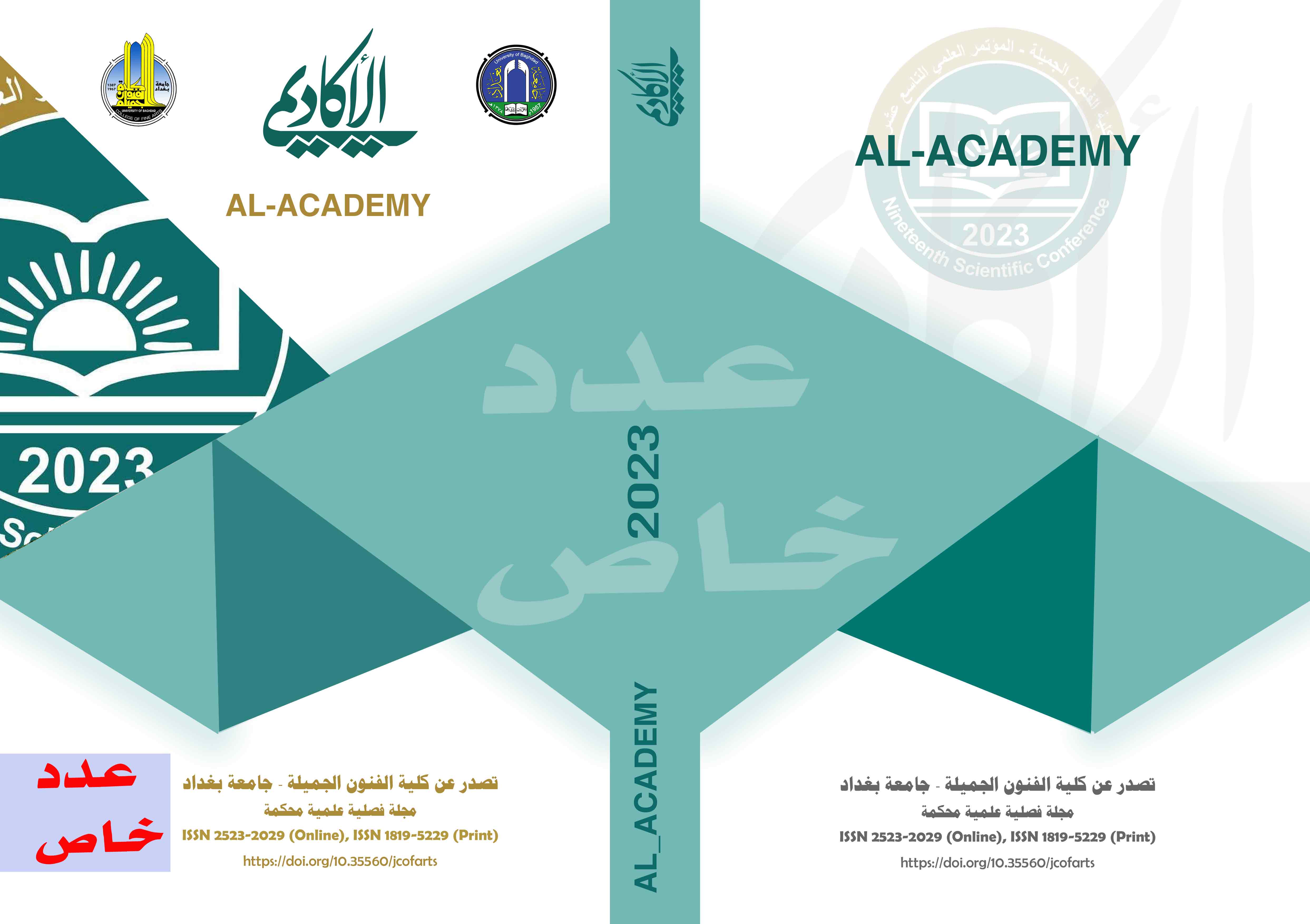Government slogans and the reflection of visual identity in their designs
DOI:
https://doi.org/10.35560/jcofarts1232Keywords:
logos, reflection, visual identityAbstract
There is no doubt that development is a human necessity and an urgent technical imperative that science imposes on all aspects of societal life. Especially in the field of graphic design, as logos are among the most prominent graphic achievements of an interactive nature with the requirements of the technical and functional era to serve the recipient and the continuity of interaction with him through a visual message sent to him constantly to remind him of what he interacted with in advance, which is known as visual identity, and during the process of developing logos especially And by providing designs that suit the contemporary technical and functional development, we often see the logo lose its visual identity. Therefore, the research presented a question that represents a problem that the research tried to solve, and it is as follows: “How can the institutional visual identity be strengthened through the design change of government slogans in accordance with contemporary requirements?
The methodological framework included: the importance of research and the need for it, the purpose of the research, the limits of research and the most important terms.
The theoretical framework contains two topics: the first topic: the concept of identity, the second topic: the relationship of form and content in designing the logo of the institution, and the indicators of the theoretical framework.
The research procedures were: the research community: research models and methods of selection: and analysis of models:
The research concluded with the results and conclusion, including:
1. The general structure of the Logo Board, which was formed according to the circular body or something close to it in shape, as in Models 1 and 2.
2. Logos are based on the shorthand graphic elements and symbols as in Model No. 1,2.
3. Diversity of intellectual principles in designing corporate logos, losing the functional purpose of the slogan for the governmental institution
References
Bishara, E. (2006). The transformation of the signs in contemporary Iraqi ceramics and the mechanism of their operation. Babylon: University of Babylon.
Abbas, A. (2006). The use of techniques in the structure of the ceramic figure. Baghdad: Polytechnic Institute of Technical Education Authority.
Al-Husseini, I. (2008). Design Art - Philosophy - Theory - Application. Sharjah: House of Culture and Information.
Al-Khafaji, S. A. (2004). Intellectual features and formal organization in the designs of the Iraqi wall calendar. Baghdad: College of Fine Arts, University of Baghdad.
Alloush, S. (1985). Dictionary of contemporary literary terms. Beirut: Lebanese Book House.
alnaeimi, S. (2018, 11 14). University of Babylon. Retrieved from http: // www. uobabylon. edu. iq / uobcoleges / lecture. aspx? fid = 14 & lcid = 79596: 5: 37:23.
Al-Oqabi, A. (2009). The Act of Change and the Shifts of the Social Architectural Identity. Baghdad: Department of Architecture at the College of Engineering, University of Baghdad.
Al-Razi, M. b. (1983). Mukhtar Al-Sahah. Kuwait: Dar Al-Resala Kuwait.
Al-Shuwaili, F. (2004). The formal structure of color in contemporary Iraqi painting. Basra: College of Fine Arts at the University of Basra.
Al-Taie, L. (2006). The relationship between form and meaning in some designs issued by UNICEF. Baghdad: College of Fine Arts. Baghdad University.
eanad, D. (2010). The effectiveness of the unit in designing the logos of the colleges of the University of Baghdad. pp. Academic Journal, No. 54. College of Fine Arts, University of Baghdad.
Faris, M. (2007). Form transformations in contemporary sculpture in Iraq and Egypt. Baghdad: College of Fine Arts / University of Baghdad. Baghdad.
Farman, Z. (2015). The evolution of formal structures in branding. Baghdad: College of Fine Arts, University of Baghdad.
Ghazwan, M. (2006). The heritage symbol in contemporary print design. Baghdad: General Cultural Affairs House.
Hammoud, F. (2011). Levels of the formation of social identity and its relationship to the main component domains for a sample of first-grade secondary students of both genders. Damascus University Journal, p. Volume 27.
Lalland, A. (2001). Laland Philosophical Encyclopedia Complete Volumes A-Z. (K. A. Khalil, Trans.) Beirut- Paris: Second Edition.
Mahmoud, A. (2016). Variables affecting the design of the commercial advertisement. Baghdad: Al Fath for printing and reproduction.
Mohammed, I. (2012). Political propaganda and its impact on public opinion. pp. Babylon University Journal - Human Sciences - Volume 20 - Issue 3.
Mohammed1, N. (2019, October 21). The design is an idea. The World Newspaper. Retrieved from www. alaalem. com.
Munroe, T. (2014). Development in the arts and some other theories in the history of culture (Vol. 1). (M. A. Abu Dora, Trans.) Cairo: Write Memory Series 161.
Naim, M. (2005). Taming form and the authority of meaning. Baghdad: architecture. Technology University.
Najmuddin, R. (2015). Blogs on Art and Design. USA: CreateSpace / Amazon.
Reed, H. (1986). Present of Art. (S. Ali, Trans.) Baghdad: House of General Cultural Affairs.
salabia, J. (1982). The philosophical attacker. Beirut: Lebanese Book House. school library.
Wajdi, M. (1953). The Explanatory Qur’an, Linguist and Moral, . . Cairo: Cairo Library.














